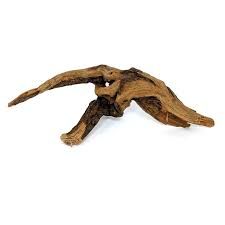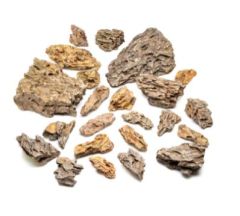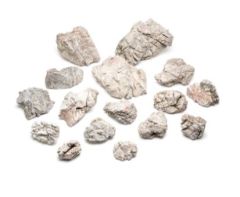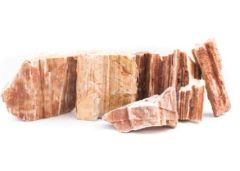Dragon Stone Hardscape: Transform Your Aquascape
Looking to master the use of Dragon Stone in your aquarium? This straightforward guide breaks down what Dragon Stone is, why it’s favored by aquarists, and step-by-step insights for integrating it into your aquascape for a stable, visually captivating habitat.
Table of Contents
Key Takeaways
- Dragon Stone, also known as Ohko Stone, is a popular choice for aquarium hardscaping, valued for its natural, layered textures and its ability to create naturalistic aquascapes without altering water chemistry.
- The versatility of Dragon Stone allows aquascapers to achieve various effects, from the minimalism of Iwagumi layouts to the wildness of Jungle Style Tanks, with specific selection and arrangement techniques enhancing the aquascape’s depth and intricacy.
- Regular maintenance of Dragon Stone aquascapes is essential, which involves gentle cleaning to prevent algae buildup and caring for complementing plant species to ensure sustained aesthetic and environmental quality.
Discovering Dragon Stone: An Aquascaping Marvel
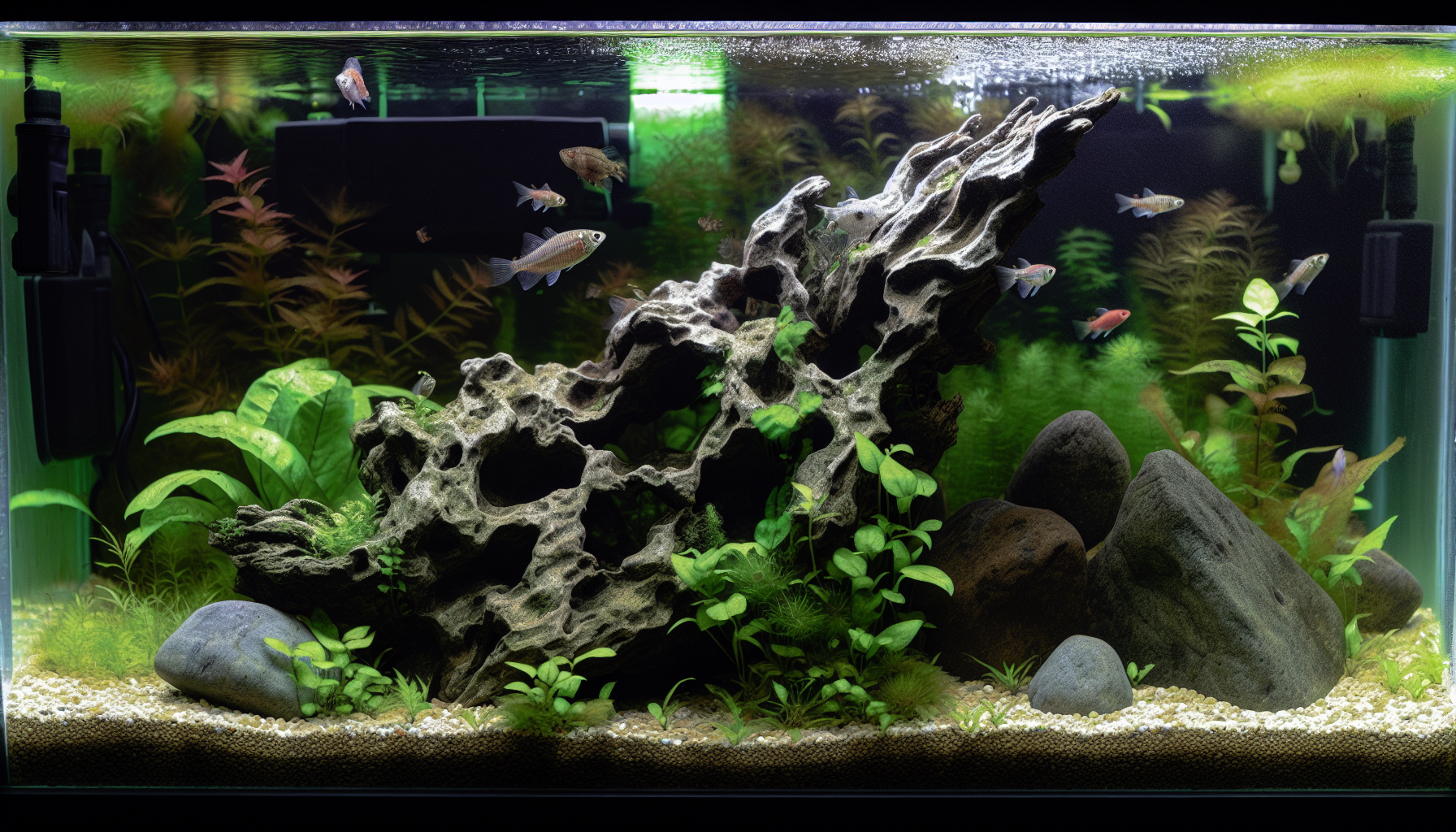
Known alternatively as Ohko Stone, Dragon Stone is highly valued in the planted aquarium hobby. Recognized for its distinct layered textures, this aquarium rock is a prominent hardscaping material that brings a slice of nature’s beauty to aquariums. Each piece of this unique type of aquarium driftwood is like an artist’s canvas, featuring intricate crevices and a textured surface that enhances the natural aesthetics of the aquatic environment, making it a favored choice for aquarists worldwide.
The Origin and Composition of Ohko Stone
Originating from Japan, Ohko Dragon Stone, also known as Ohko Stone or Dragon Stone, is a type of clastic sedimentary rock. Composed of clay minerals and bits of organic matter, this unique type of stone is a specific type of mudstone. The distinct formation process of Dragon Stone, rooted in its volcanic origin, contributes to its unique texture and appearance. Some key features of Dragon Stone include:
- Rough and jagged edges
- Earthy brown and gray colors
- Intricate and intricate patterns
- Porous and lightweight structure
These characteristics make Dragon Stone a popular choice for aquariums and terrariums, as it provides a natural and visually appealing environment for aquatic plants and animals.
Found in deposit areas around lakes, ponds, and seas in Japan, each Dragon Stone, also known as seiryu stone, carries with it a piece of its geologic heritage. These seiryu stones are highly sought after for their unique appearance and natural beauty.
Visual Appeal of Dragon Stone
Dragon Stone offers the following features:
- Organic, scaly texture
- Richly detailed surfaces resembling dragon scales
- Earthy tones, from greens and browns to yellows
- Unique shapes and colors based on specific sourcing location
- Convenient cart dragon stone option for easy transportation
These features contribute to the beauty and visual variety of Dragon Stone.
The striking appearance and naturally dramatic forms of pre-selected Dragon Stone, a popular choice among aquarium rocks, contribute to creating depth and intricacy in aquascapes, particularly enhancing the visual appeal of freshwater Nature Aquariums.
Practical Benefits: Water Chemistry and Fish Safety
Beyond its aesthetic appeal, Dragon Stone offers practical benefits. It is inert and does not significantly alter water chemistry, maintaining stable conditions suited for most freshwater aquarium life. Its composition of light clay material allows for the creation of large and intricate hardscapes that are safe for the inhabitants of the aquarium.
However, before its introduction into the aquarium environment, Dragon Stone should be thoroughly rinsed and possibly soaked, as it may initially harbor mud and dirt in its crevices. This helps maintain both the aesthetic appeal and aquatic safety of your tank.
Sculpting Your Scape: Incorporating Dragon Stone
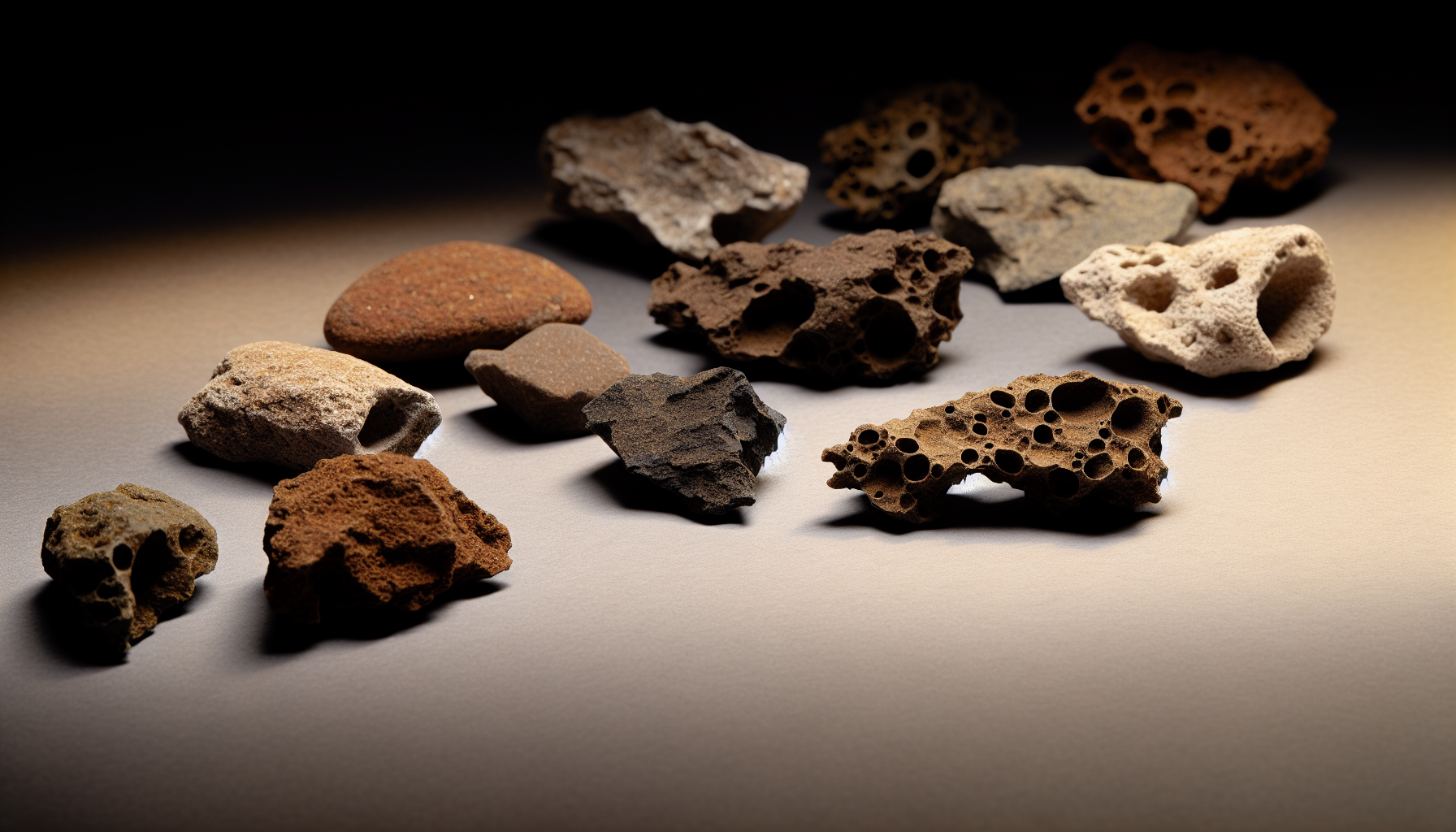
Adding Dragon Stone to your aquascape is comparable to the artistry involved in painting a canvas. Selecting the right pieces, arranging them for visual impact, and ensuring their stability are all part of this creative process. Whether you’re designing a simplistic Iwagumi layout or a lush, plant-filled nature aquarium, Dragon Stone’s versatility brings out the best in your hardscape.
Selecting the Perfect Pieces
Selecting appropriate pieces of Dragon Stone is a fundamental process in crafting your aquascape. For larger aquariums, selecting larger pieces can help create a more impactful visual presence and an illusion of depth. An XL dragon stone used as a tall tower becomes a captivating focal point, particularly in environments where smaller fish can school around it. It’s beneficial to purchase a greater variety of shapes and sizes of dragon stone than initially planned to have flexibility and options when scaping.
Remember, the beauty lies in the details, so pay close attention to the stone’s weight and volume, as different types of stones may vary in size despite having the same weight.
Arrangement Techniques for Impact
The arrangement of Dragon Stone in your aquascape is akin to artistic expression. To create a convincing sense of depth, you can:
- Place larger stones at the forefront and smaller ones towards the back of the aquarium
- Create a concave arrangement or a singular, off-center dragon stone feature as an effective focal point
- Guide viewers’ gaze and add asymmetry to the aquascape
You can also imbue your aquascape with a sense of dynamic movement by leaning dragon stones diagonally or by using stones of varying heights to create a tiered landscape effect. The possibilities are endless and limited only by your creativity.
Stability and Anchoring Methods
After choosing and arranging your Dragon Stone, securing their placement is of utmost importance. This is essential not only for the visual appeal but also to prevent accidents like toppling, which can damage the aquarium and harm its inhabitants.
Wooden dowels can be drilled into dragon stone for stability, while aquarium sealant, reef tank epoxy, or glue can be used to fix stones in place or to each other. Always remember to balance the stones correctly, especially in high structures, as Dragon Stone can be fragile and easy to break.
Complementary Elements: Pairing Plants with Dragon Stone
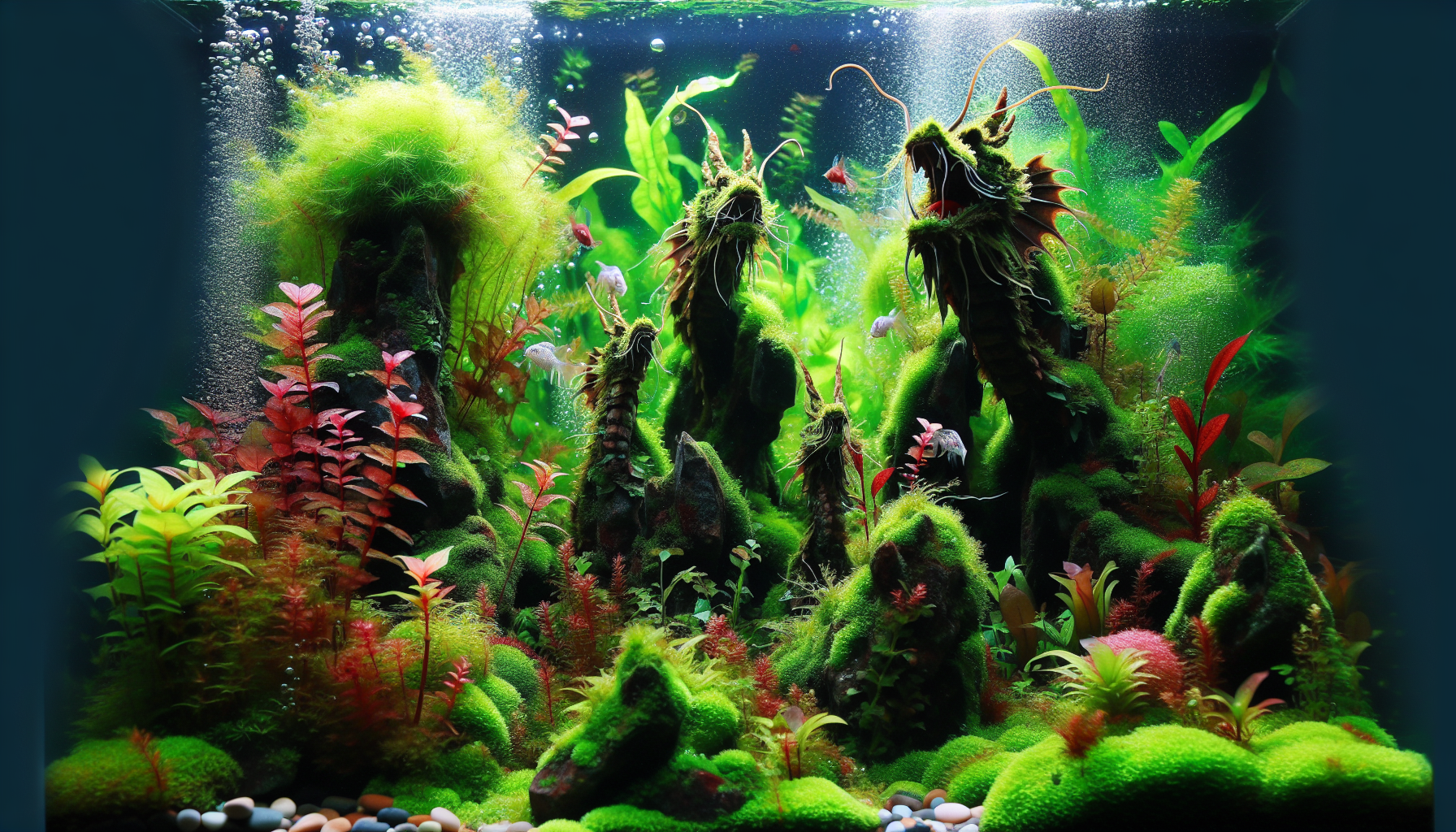
An impressive aquascape isn’t solely focused on the hardscape; the softscape also plays a significant role. Pairing Dragon Stone with the right plants is crucial for creating a naturalistic and visually appealing environment. The right aquatic plants can enhance the sense of depth and offer a striking contrast with the rugged texture of Dragon Stone. Using proper aquascaping equipment will ensure the best results in arranging these elements.
Ideal Plant Species for Dragon Stone Layouts
The selection of appropriate plant species to complement Dragon Stone in your aquascape can profoundly influence the overall effect. Java Fern and Mosses like Java Moss are ideal for growing on Dragon Stone as they can attach directly to the surface, foregoing the need for a substrate. Cryptocoryne species, when planted in substrate surrounding Dragon Stone, contribute varied leaf textures and colors, complementing the stone’s rugged texture.
A combination of Moss, Jungle Val, and Anubias around Dragon Stone establishes a lush, jungle-like environment within the aquarium.
Designing Plant Placement
The strategic placement of plants in your aquascape is equally as important as the selection of suitable species. To maintain depth and perspective around Dragon Stone, taller plant species should be planted towards the back of the aquarium, using progressively shorter plants towards the front.
Foreground plants should be selected for their low growth habit to complement, rather than obscure, the intricate features of Dragon Stone in the aquascape.
Maintenance Tips for Planted Dragon Stone Aquascapes
The upkeep of your Dragon Stone aquascape is a continuous process that demands careful attention and diligence. Regular trimming of plants, particularly fast-growing stem plants, is essential to preserve both the appearance and prevent the plants from overshadowing the Dragon Stone.
Ensuring a proper nutrient balance is crucial for the health of plants in a Dragon Stone aquascape, with liquid fertilizers beneficial for those plants that do not have their roots in the substrate. Lastly, in environments with a pH level below seven, Dragon Stone slowly weathers and leeches minerals that are beneficial to plant life.
The Art of Dragon Stone in Various Aquascaping Styles
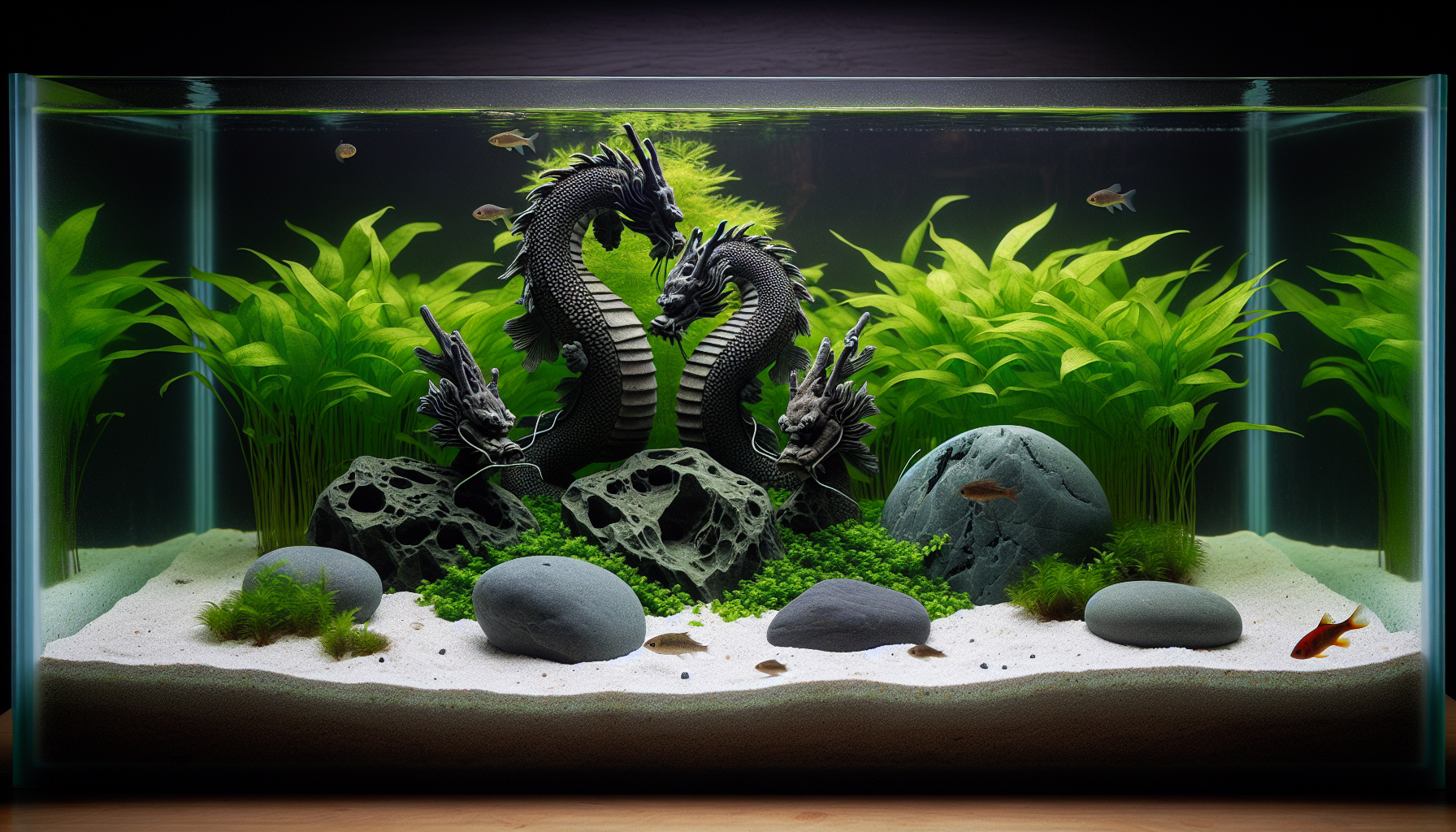
Now that we’ve covered the basics of using Dragon Stone in your aquascape, let’s explore its potential to elevate various aquascaping styles. Whether you’re a fan of the minimalist Iwagumi style, the lush Nature Aquarium, or the dense foliage of Jungle Style Tanks, Dragon Stone is a versatile choice that can elevate the aesthetic appeal of these layouts.
Enhancing Iwagumi Layouts with Dragon Stone
Dragon Stones frequently serve as the central rock formation in Iwagumi aquascaping, contributing texture and contrast to its simplistic design. It’s vital to choose stones with consistent texture and color to maintain the design’s overall harmony.
The natural beauty and distinct features of Dragon Stone are widely appreciated in Iwagumi style aquascapes, where they showcase their natural aesthetics.
Crafting Nature Aquariums with Dragon Stone
The objective of Nature Aquariums is to emulate natural landscapes within the aquarium’s boundaries. Dragon Stone is instrumental in crafting Nature Aquariums that resemble natural landscapes, exemplified by its use in recreating stream beds and rock formations.
The craggy texture and layered appearance of Dragon Stone mimic natural aquascaping rocks found in the wild, adding an element of rugged wilderness to the aquascape, making it a popular choice among those who appreciate the beauty of rocks in their designs.
Creative Approaches in Jungle Style Tanks
Jungle Style Tanks are characterized by dense plant growth, simulating a lush, wild environment. Dragon Stone serves as the structural backbone in these tanks, creating intricate, natural-looking scenes that simulate a rainforest environment.
The varied holes and crevices in Dragon Stone offer hiding places for fish and invertebrates, contributing to the biodiversity and natural feel of a jungle-style tank.
Caring for Your Dragon Stone: Cleaning and Algae Prevention

Similar to other aquarium elements, Dragon Stone necessitates routine care and upkeep. Cleaning and maintaining Dragon Stone not only preserves its aesthetic appeal but also prevents the buildup of algae, ensuring the overall health of your aquascape.
Routine Cleaning Practices
The cleaning process of Dragon Stone is delicate and employs gentle techniques. Use the following steps to clean Dragon Stone without damaging it:
- Use soft brushes or plastic scrapers to remove any dirt or debris from the stone.
- Rinse the stone thoroughly with water to remove any remaining dirt.
- Before placing Dragon Stone in your aquarium, it’s crucial to remove any existing dirt and clay to prevent unwanted changes in water chemistry.
This involves gently scrubbing and rinsing it under running tap water without using any harsh chemicals. Mud holes in the Dragon Stone can be cleaned more effectively by using a hose to spray off loose dirt, then shaking the stone underwater to rehydrate and remove trapped mud.
Curating a Collection: Where to Find Quality Dragon Stone
Having acquainted yourself with the art of using Dragon Stone in your aquascape, you may now be curious about where to procure this gem. Quality Dragon Stone can be found through various sources, including online retailers, aquascaping specialists, and local aquatic stores.
Online Retailers and Aquascaping Specialists
Online retailers like The Shrimp Farm offer a variety of Dragon Stone sizes and packages. Customers typically find better value in Dragon Stone from The Shrimp Farm, with the variety of sizes received often surpassing what is available in smaller bags at pet stores.
Visiting Local Aquatic Stores
If you prefer to handpick your Dragon Stone pieces, visiting local aquatic stores can be a great option. The Shrimp Farm, based in Normal, IL, allows you to handpick stones if desired. Other local fish stores that may be more local to you are worth a shot as well! Give them a call and see if they stock these stones.
Submit Your Dragon Stone Aquascape
After creating your masterpiece using Dragon Stone, consider sharing it with the aquascaping community. Readers are invited to submit high-quality photos of their Dragon Stone aquascapes, accompanied by a brief description outlining the aspects of their design. Submissions are reviewed by an editorial team that selects aquascapes based on creativity, aesthetic appeal, and the effective use of Dragon Stone.
Creators of featured Dragon Stone aquascapes receive recognition through the blog’s social media channels and community forums, fostering acknowledgment and inspiration within the aquascaping community.
Summary
Aquascaping with Dragon Stone is a creative journey, transforming ordinary aquariums into extraordinary underwater landscapes. From selecting the right pieces to perfecting the arrangement, every step in this journey shapes the final masterpiece. Paired with the right plants and maintained well, Dragon Stone can breathe life into your aquascape. Whether you’re a beginner or a seasoned aquarist, we hope this blog post has inspired you to explore the art of aquascaping with Dragon Stone. Remember, the beauty of aquascaping lies in its ability to bring a slice of nature right into your living space.
Frequently Asked Questions
Dragon Stone, is a hardscape stone used in aquascaping of freshwater planted aquariums
Before placing Dragon Stone in your aquarium, make sure to thoroughly rinse and possibly soak it to remove any mud and dirt from its crevices. This will help maintain a clean and healthy aquatic environment for your aquatic life.



 Shrimp
Shrimp Fish
Fish Crab &
Crab & Plants
Plants Foods
Foods Snails
Snails
